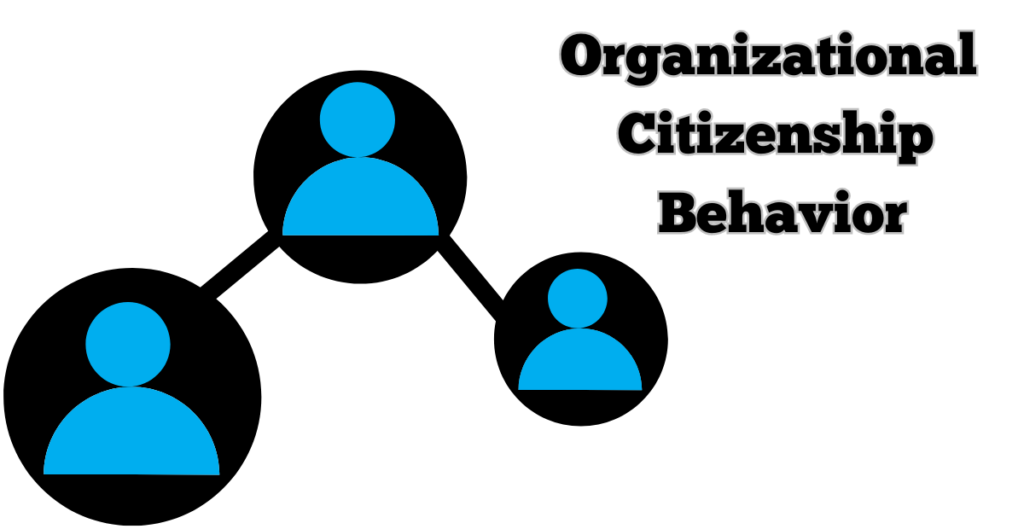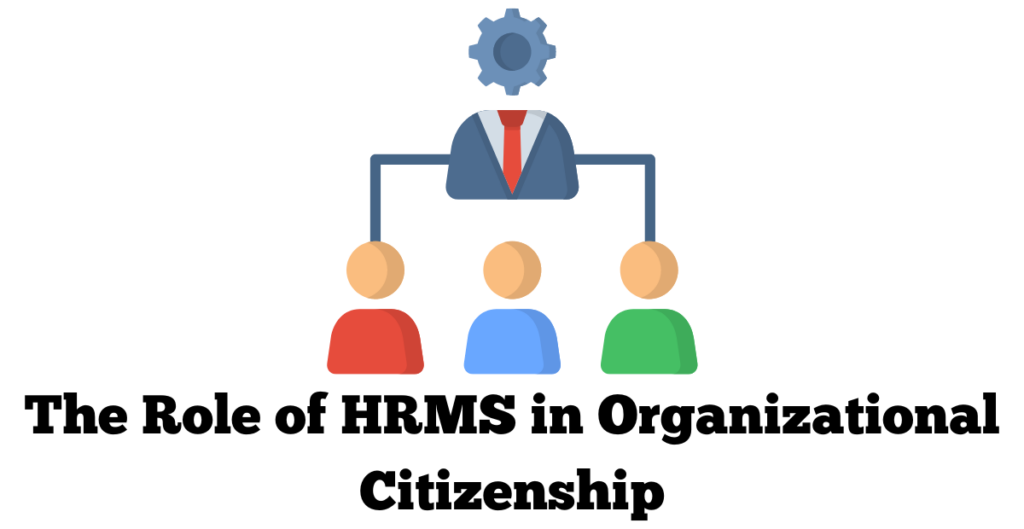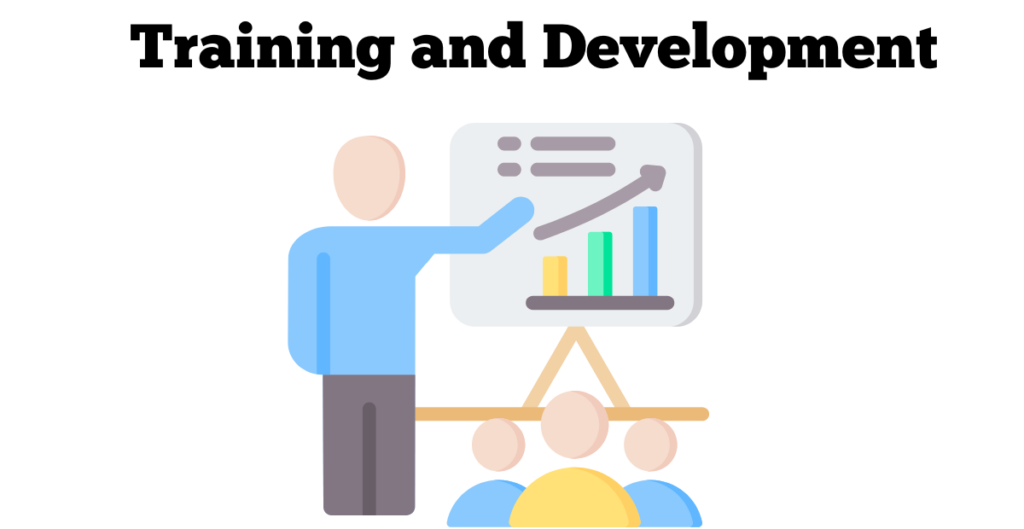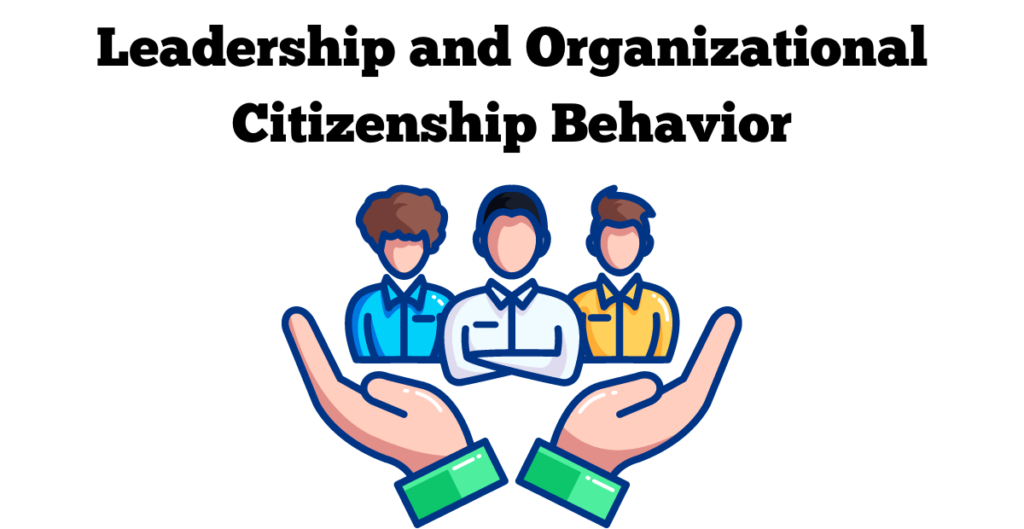Understanding Organizational Citizenship Behavior
Organizational Citizenship Behavior (OCB) is the name for additional, voluntary actions that employees take at their discretion, which go beyond their formal job duties but result in the growth of productivity and quality of their company as a whole. OCB involves leaders who willingly assist others, offer to do extra work, demonstrate the requirements of loyalty, and contribute to the culture of the organization.
Defining Organizational Citizenship Behavior (OCB)
Organizational Citizenship Behavior refers to voluntary, spontaneous actions by employees that go beyond their formal job requirements. While these behaviors may not offer direct rewards, they contribute significantly to an organization’s success. Such actions often include kindness, cooperation, and proactive efforts that extend beyond the scope of the official job description.
Importance of Organizational Citizenship Behavior in Workplace Culture
Organizational Citizenship Behavior is the main factor that influences the on-the-job environment and determines the culture and climate of the organizational behavior, thus, you can find employees who care much about each other and are willing to help and contribute to the organization’s success. Some key reasons why Organizational Citizenship Behavior is important in workplace culture include:
- Enhanced Teamwork and Collaboration: Organizational citizenship Behavior by its very nature gives rise to teamwork and support – these are the forces that enable team members to work towards a common goal. The result of this kind of atmosphere is unity, the establishment of communication between the team members. In that way, the team becomes more efficient and powerful.
- Improved Organizational Performance: Organizational citizenship Behavior is the driver of better organizational performance through the explained improvement in employee engagement and workplace commitments. Material employees get appreciated for his or her outstanding contributions and because of that begin to show high levels of motivation at their work which in turn attracts a high level of performance and productivity.
- Positive Work Environment: Organizational citizenship Behavior succeeds in generating an atmosphere in the workplace where employees enjoy the privilege of relying upon each other, listening to each other, and supporting each other. Staff members who support Organization Citizenship Behavior lead to a culture of mutual aid and shared interests, where everyone makes an effort to appreciate and respect each other’s views, can afford to challenge the status quo, and can make the best of their collective input.
The Role of HRMS in Fostering Organizational Citizenship
Organizational Citizenship Behavior (OCB) is very much impacted by the qualities of organizations and policies that can support and acknowledge the contributions of employees. Human Resource Management System (HRMS) is the main facilitator of Organization Citizenship Behavior as it offers all the resources and instruments to engage employees, acknowledge and congratulate on positive outcomes, strengthen ties between colleagues, and develop a supportive atmosphere.
Encouraging Employee Engagement through HRMS Features
With the advent of HRMS systems, numerous features and functionalities are geared towards employee involvement and these also open the door for communication, collaboration, and participation to be facilitated in organizational activities. These features may include:
- Employee Self-Service Portals: Employee-self-service interfaces will help employees to research, share and act on information, edit their data, and partake in the HR direction in various HR procedures such as performance evaluation, training as well as career development.
- Social Collaboration Tools: HRMS solutions on many occasions encompass social tools like discussion forums, IM functionality, and employee directories that aid communication among employees and foster collaboration.
- Feedback and Survey Mechanisms: HRMS systems provide organizations with the possibility of collecting feedback from the staff members using surveys, polls, and feedback forms which is an excellent chance for staff to tell their thoughts, prompt concerns, and provide proposals for better working conditions.
Leveraging HRMS for Recognition and Rewards Programs
Employee attention and praise, as well as reward programs, have a strong motivational effect to make them extend beyond what is formally required of their job description. HRMS platforms can support these programs by providing:
- Recognition Tools: HRMS systems provide a team attitude on which other co-workers and the boss may appreciate contributors immediately, as the platform has recognition tools that can be leveraged. Among those tools is to come up with features, like an employee recognition badge, an employee shout-out, and a thank-you note.
- Rewards Management Systems: HRMS platforms are the reflection of the one that manages the reward and incentive processes via automation of activities like reward allocation, redemption, tracking, and others. Companies could adjust their rewards programs so that they relate to the Organization Citizenship Behavior department and create goals to be achieved by giving things like bonuses, gift cards, or time off as their incentives.
- Performance Analytics: The human resources management system technologies allow companies to monitor the work and present the analytical and report data on the individual performance and involvement of employees in the Organization Citizenship Behavior activities. Through data analysis, it becomes possible to discover top performers, provide recognition, and apply reward schemes that support valuable performance.
Payroll Software and Organizational Citizenship Behavior
Payroll Software does its primary work at the processing of the salaries and their provisions. The power of Payroll Software goes further and beyond as it develops Organizational Citizenship Behaviour (OCB) thus doing more than just monetary transactions. Through justness and fairness, a transparent policy and efficiency, and being a key protector of organizational culture, Payroll Software becomes a necessary element while employees behave.
Ensuring Fairness and Transparency in Payroll Processes
Payroll software is the key tool for creating fairness and transparency that feeds into employee views of the company, contributing to their willingness to go beyond their defined job duties. Key features include:
- Automated Calculation: As payroll software automatically calculates salary allotments according to the regulations defined, it brings transparency and precision in the compensation process, hence minimizing the bias and errors that may result from manual calculations.
- Transparent Policies: By deploying Payroll Software, organizations drive home uniform payroll policies that are transparent, that is, they communicate them explicitly, including the criteria for pay determination, bonuses, and other benefits, hence giving clarity and creating trust among employees.
Linking Compensation to Organizational Citizenship Behaviour and Performance
The compensation of OCB as a method of rewarding positive behavior which is active engagement is one of the ways to increase employees’ performance. Payroll Software facilitates this linkage by Performance-Based Compensation:
- Humanize the sentence: Through Payroll Software, companies are empowered to establish and implement Organizational citizenship behavior using performance-based reward systems, by rewarding employees who exemplify such behaviors as lending a helping hand, volunteering for extra tasks, and propelling others towards team goals.
- Variable Pay Programs: Payroll Software makes necessary adjustments in variable pay structures – bonuses, incentives, or showing some share of profits, in which the OCB indicators are greatly focused.
Training and Development Initiatives
Training and development aim at the development and the commitment of organization employees and organizations. Implementing the training programs in favor of Organizational Citizenship Behavior (OCB) will be beneficial when the culture of work advances in collaboration, innovation, and mutual support.
Utilizing HRMS for Training Programs that Promote Organizational Citizenship Behavior
HRMS platforms offer valuable tools and resources to facilitate training programs that promote organizational citizenship behavior among employees:
- Customized Learning Paths: HRMS systems are now providing organizations with custom-designed learning paths that not only aim at the employees’ organizational citizenship behavior and their outcomes but also the organization’s goals. The pathways could contain classes, workshops, and materials that help to enhance the abilities and practices associated with organizational citizenship behavior for instance how to foster teamwork, communication, and how to solve problems.
- On-Demand Training Resources: The HRMS systems create a convenient manner of accessing relevant training materials such as e-learning courses, videos, and webinars that employees can take at any time at their preferred locations. These digital resources help to facilitate teaching and learning on the go avenues and directly ensure that the staff members possess the capacity for individual growth and development anytime they wish to.
- Performance Support Tools: The performance support functions of HRMS platforms go beyond the type provision of feedback and include the provision of employees with task-based guidance and assistance in real time. These kinds of tools can include job aids, checklists, and interactive guides that facilitate employees to exercise the organizational citizenship behavior principle practically in their daily work and tasks.
Tracking Organisation Citizenship Behaviour Metrics and Performance in HRMS Platforms
HRMS platforms also facilitate the tracking of organizational citizenship behavior metrics and performance to monitor employee engagement and identify areas for improvement:
- Organizational Citizenship Behavior Metrics Dashboard: With its dashboards and reporting tools, the HRMS platform is equipped to show organizational citizenship behavior indicators which predominantly can be engagement scores, how efficient the interaction of employees in teamwork is, and how they participate in voluntary action. These dashboards give HR managers a new level of transparency as it concerns organizational citizenship behavior performance and allows them to observe trends and emerging issues in real time.
- Feedback and Survey Mechanisms: Today’s HRMS systems equip companies with feedback and survey tools so they can draw employees’ comments in the areas related to organizational citizenship behavior, like the perception of collaboration, organizational culture, or leadership efficacy. Through ongoing conduct of the opinion polls, organizations will see whether the employees have positive attitudes and thoughts about their organizational citizenship behavior and then take practical and preventive measures in case of need to remedy them.
- Performance Appraisal Integration: Thus, the best HRMS systems interface with performance review frameworks to utilize organizational citizenship behavior quotas in the process of appraisal. Another way is to have organizational citizenship behaviors incorporated into the performance review process of organizations, in which their employees’ contributions towards organizational success beyond and above their formal role duties are recognized and rewarded.
Leadership and Organizational Citizenship Behavior
Leadership in the organization certainly is of great significance as far as nurturing organizational culture and stands out in Organizational Citizenship Behavior. Through the fostering of leadership styles that create vague conditions for task accomplishment and the implementation of human resources management systems data to spot Organizational Citizenship Behavior champions, organizations can set the pace of cooperation within the workplace where employees are willing to do more than their job description requires.
Cultivating Leadership Styles that Encourage Organizational Citizenship Behavior:
Leaders’ styles hugely affect employees’ behavior and engagement. Original: Leaders who portray servant and transformational leadership styles will showcase more likely behaviors that will inspire other group members towards organizational citizenship behaviors. Key strategies for cultivating leadership styles that encourage Organizational Citizenship Behavior include:
- Setting a Positive Example: It is the task of a leader to be the first to actualize the Organizational Citizenship Behavior habits and to translate them into practice–for instance, he should help others, volunteer for ‘beyond-the-call-of-the-job’ tasks, and support the culture of teamwork or collaboration in the organization.
- Empowering Employees: Leaders must increase the level of authority by transferring decision-making power to subordinates, providing them with a certain level of autonomy, and helping them take charge and contribute to their organizations’ goals.
- Providing Support and Recognition: Leaders shall ensure that employees, who have interacted the way they should, get the necessary backing and recognition, telling that their systems of working are commendable and penultimate as well as reinforcing such behaviors through praise, rewards, and promotion.
Utilizing HRMS Data for Identifying Organizational Citizenship Behavior Champions
Through the utilization of HRMS platforms, an organization can produce data to determine the employees who consistently demonstrate what are considered organizational citizenship behaviors and can be acknowledged as organizational citizenship behavior champions. Key ways to utilize HRMS data for this purpose include:
- Performance Metrics: HRMS sites provide for metrics measurement purposes, e.g., how the organization could be effective in teamwork or how people are doing during certain activities, during which customer satisfaction scores are taken or people join the voluntary activities. Through data analysis of the mentioned metrics, organizations can find the staff members who are most proficient in exhibiting Organizational Citizenship Behavior and congratulate them for their vast realization of their work.
- Peer Feedback and Recognition: HRMS platforms can make possible the peer-review system and appreciation-related programs, whereby colleagues can congratulate their colleagues for obeying Organizational Citizenship Behavior standards. Gathering and assessing the rating from feedback petrified, institutes will explore the Organizational Citizenship Behavior honchos who would be love letters and highly regarded by their fellows for their ideas.
- Employee Engagement Surveys: Through its HRMS platforms, companies can design engagement surveys that feature inquiry on Organizational Citizenship Behavior aspects including eagerness to support other people, devotion to organizational goals, and the much- needed loyalty. Through the survey data analysis, organizations empower workforces to provide feedback on Organizational Citizenship Behavior behaviors, the leaders pay attention to consistently shown employees and introduce new ways to keep them appreciated and recognized.
Building a Culture of Trust and Collaboration
An atmosphere of trust and collaboration is a must for companies looking to cultivate employee engagement, innovation, and organizational productivity. HRMS systems are designed to support the creation of a collaborative culture via a variety of tools that enhance communication, transparency, and teamwork.
Creating a Positive Work Environment with HRMS Tools
HRMS platforms offer a variety of tools and features that contribute to creating a positive work environment:
- Employee Self-Service Portals: The portals of self-service which are designed for employees, are used to obtain information, update key data, and perform basic HR-related tasks, without involvement of an external person, which develops a sense of autonomy and well-being about the work of employees.
- Performance Management Modules: Performance management modules equip organizations to set objectives, monitor the process, deliver meaningful feed backs, and then reward and recognize the achievements on the spot, as a result, culture of constant feedback and recognition is created.
- Social Collaboration Tools: Human resources management systems (HRMS) platforms include integration features like instant chatting, forums for discussions, and employee directories that are vital in facilitating teamwork irrespective of where you are or what time it is.
Facilitating Communication and Teamwork through HRMS Platforms
HRMS platforms serve as central hubs for communication and teamwork, enabling employees to collaborate effectively and achieve common goals:
- Unified Communication Channels: An HRMS system brings all communication channels (email, instant messaging, and video conferencing) to a simple interface, allowing employees to be in touch with each other quickly.
- Document Sharing and Collaboration: The Human Resource Management System platforms share documents and allow for collaboration features that allow for staff members to create, edit, and share documents in real-time, which in return facilitates collaboration on projects and other initiatives to disregard geographical barriers.
- Task Management and Tracking: HRMS platforms provide means of task management and tracking tools used by present-day teams to set tasks, set up deadlines, and track progress wherein accountability and transparency are guaranteed in project management.



